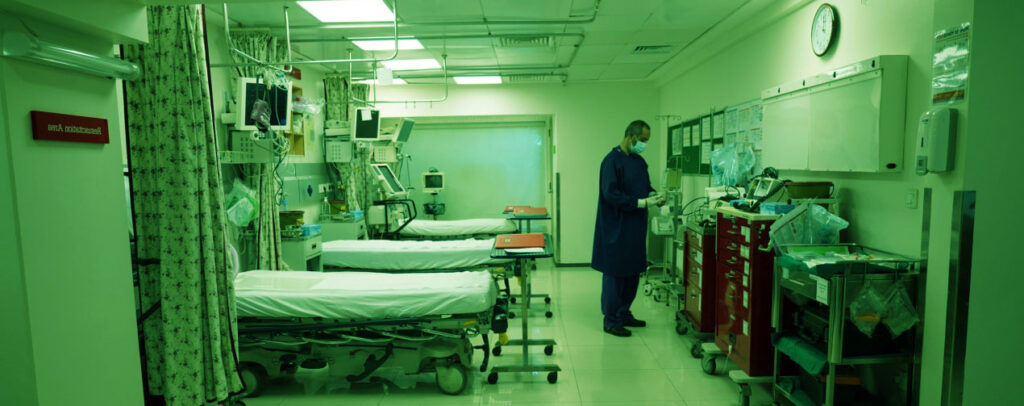
Introduction
The United States is home to one of the maximum superior and diverse medical facilities healthcare structures in the world. With a big range of scientific facilities ranging from small rural clinics to big city hospitals, the healthcare machine within the U.S. serves millions of human beings every day. The type of clinical establishments, each designed to satisfy precise fitness desires, plays a vital role inside the us of a’s potential to offer each preventive and emergency care. In this text, we are able to explore the exclusive forms of clinical centers inside the U.S., their capabilities, and the challenges they face.
Hospitals
Hospitals are the spine of the U.S. healthcare machine. They provide complete care, ranging from emergency services to specialized surgical procedures. There are two primary varieties of hospitals: public and private. Public hospitals are usually funded by the government and offer offerings to all, inclusive of the ones without insurance. personal hospitals, alternatively, are typically owned by way of individuals or groups and cater to paying sufferers or those with personal coverage for medical facilities.
Hospitals within the U.S. are ready with modern day era and staffed with a wide variety of medical experts. they are frequently categorized based on their forte, such as widespread hospitals, kids’ hospitals, and teaching hospitals, which are affiliated with universities and have interaction in medical research and schooling. a few of the USA’s most renowned hospitals, such as the Mayo hospital in Minnesota and the Cleveland health facility in Ohio, are acknowledged for their specialized care and present-day clinical studies.
Primary Care Facilities
Number one care centers encompass physician’s offices, outpatient clinics, and pressing care facilities. these centers offer first-line remedy for not unusual illnesses and injuries, preventive care, and ongoing control of continual situations. number one care carriers (PCPs), consisting of own family physicians, internists, and pediatricians, are often the first point of contact for patients in want of clinical interest.
Pressing care facilities, a growing section within the U.S., are designed for non-emergency situations that require immediately attention, such as minor injuries or infections. those facilities are typically open after hours and on weekends, presenting a greater convenient opportunity to emergency rooms for much less severe conditions that may not need extensive medical facilities.
Specialty Care Facilities
Uniqueness care facilities cater to unique medical needs that require advanced information. those centers attention on unique regions of medicine, inclusive of cardiology, oncology, orthopedics, and neurology. sufferers are usually mentioned these facilities by means of their number one care physicians after a more well-known assessment.
Specialty care often involves complicated diagnostics and remedies that require noticeably trained professionals. Many big hospitals have specialized departments for those offerings, however there is also standalone area of expertise centers committed completely to imparting expert care in one particular location of medication.
Rehabilitation Centers
Rehabilitation centers within the U.S. provide offerings geared toward assisting sufferers get over physical disabilities because of injuries, surgical procedures, strokes, or continual situations. these centers offer each inpatient and outpatient services and consist of physical remedy, occupational therapy, and speech remedy, among others.
Rehabilitation centers play an essential role in supporting individuals regain capability and independence following stressful events or surgical procedures. some centers focus on specific affected person populations, such as those getting better from spinal wire injuries or strokes, while others can also offer widespread rehabilitative care.
Long-Term Care Facilities
lengthy-term care facilities, along with nursing homes and assisted residing centers, offer prolonged care for those who are no longer capable of live independently due to age, infection, or disability. these facilities provide varying tiers of care, from assist with day-by-day sports such as bathing and dressing to more intensive scientific take care of sufferers with continual conditions or terminal ailments.
Nursing homes typically provide 24-hour scientific supervision, at the same time as assisted residing centers cognizance on imparting supportive services in a extra independent surroundings. these establishments are critical in dealing with the growing elderly population within the U.S., mainly as life expectancy increases.
Challenges Faced by U.S. Medical Facilities
In spite of the advanced generation and exquisite care available in U.S. medical facilities, there are several demanding situations that the healthcare system faces. one of the number one issues is the high cost of healthcare, which has caused disparities in get right of entry to to care. Many people, in particular the ones without good enough insurance, war to afford necessary clinical offerings.
Additionally, there are extensive variations in healthcare first-class and availability between urban and rural regions. even as big cities have get admission to to quite specialized medical facilities, rural regions often face shortages of healthcare providers and centers, main to long tour times and delays in care. Eventually, the U.S. healthcare machine is confused by means of a fragmented approach to healthcare transport. the dearth of a unified machine can cause inefficiencies, with sufferers regularly seeing multiple vendors without clean coordination, ensuing in redundant exams and fragmented remedy plans.
Final thoughts
The medical centers inside the U.S.A. are diverse, excessive-tech, and comprehensive, supplying an extensive range of offerings to meet the USA’s healthcare wishes. however, notwithstanding the many strengths of the healthcare gadget, problems along with value, get right of entry to, and first-rate disparities gift ongoing challenges. making sure that medical care is on the market and low-priced to all Americans can be crucial in shaping the destiny of the kingdom’s healthcare device.
